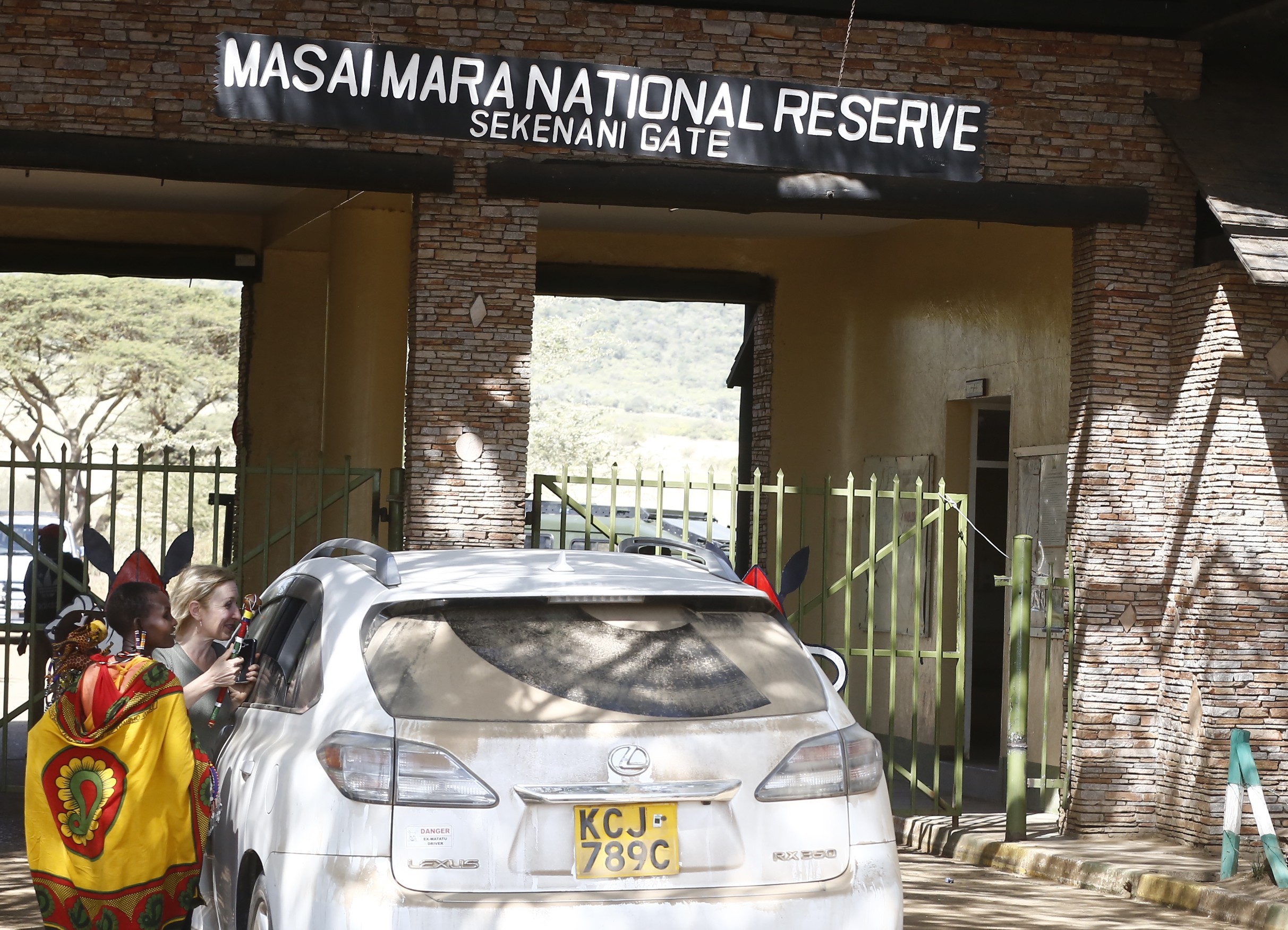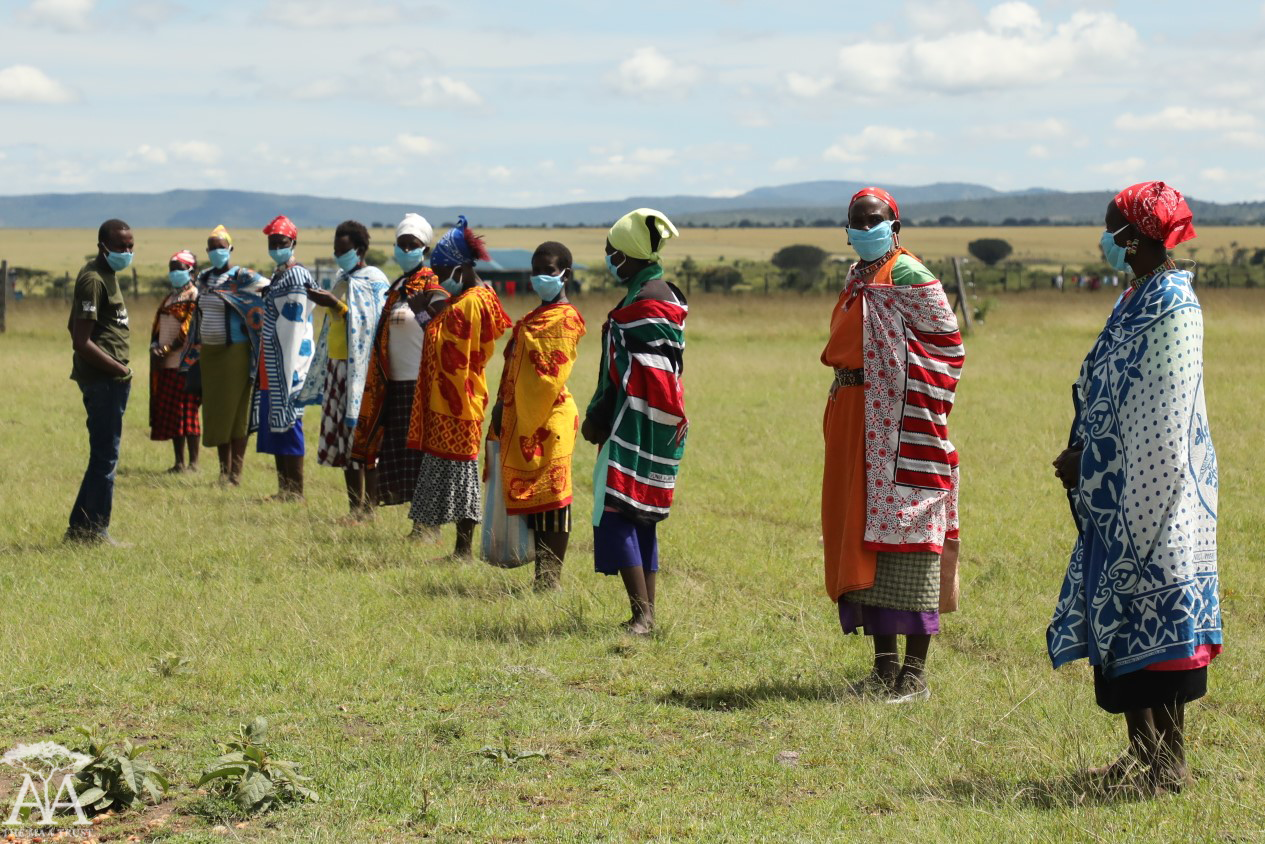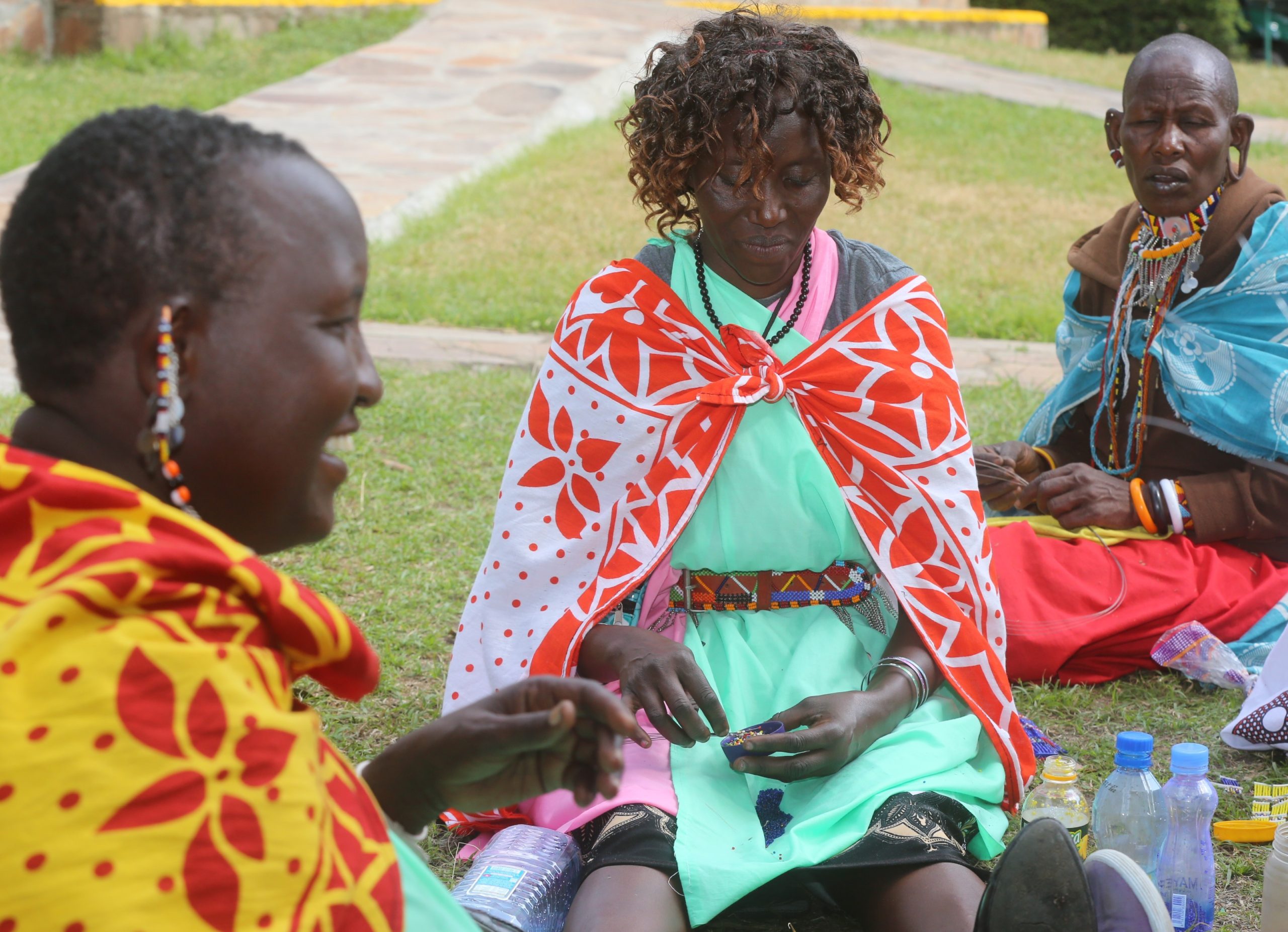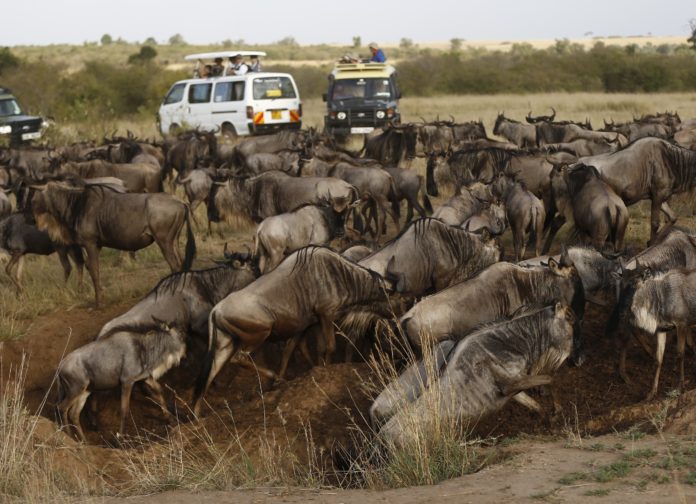|
Getting your Trinity Audio player ready...
|
By Lenah Bosibori
Narok County, Kenya: Kenyan conservancies have been hit hard by the COVID-19 pandemic. Tourism activities in the world’s famous Mara have experienced an unprecedented slump hence putting conservation projects in jeopardy amid lack of funds.
So far Kenya has lost 80% in revenues from tourism and 90% from international arrivals since March this year when the first case of COVID-19 was reported in the country.
Kenya Wildlife Service (KWS) says that between February and June this year, the tourism sector lost 80 billion shillings owing to flight cancellations linked to the COVID-19 pandemic.
Statistics from Kenya National Bureau of Statistics (KNBS) says that the country raised 167 billion shillings from tourism in 2019. A growing sector, before COVID-19, it was projected to generate 189 billion shillings in 2020 and 2021.

In the Mara, the conservancies are struggling to keep leases that have been signed for 25 years to continue. Conservancies supporting wildlife protection and livelihoods of the Maasai communities are facing a bleak future.
Dickson Kaelo the Chief Executive Officer, Kenya Wildlife Conservancies Association (KWCA) said that Kenya has made major strides though challenges remain due to the global pandemic.
“We are really seeing a big challenge, a lot of our camps have closed, the conservancies are suffering and tourism is mainly the source of revenue to our conservancies,” Kaelo said during an online webinar organized by the Ministry of Tourism and wildlife, on Impact of COVID-19 on Wildlife Conservation in the East African community.
Although land under conservation is huge, the coronavirus pandemic is threatening three decades of protecting wildlife heritage in Kenya.
KWCA further adds that Kenya has lost nearly 70% of its wildlife in the last three decades.
According to KWCA, the loss of wildlife has been due to the loss of space and connectivity and the increasing development pressures and impacts of climate change and human-wildlife conflict. The perpetrators have been gangs trying to feed their markets.
The multibillion tourism sector that promotes Kenya’s GDP continues to be hit by the effects of climate change and loss of space and currently, COVID-19 has impacted negatively on conservation projects.
Conservancies the only hope for wildlife protection
Nevertheless, conservancies offer some hope. A wildlife conservancy is land managed by an individual landowner, a body or corporate, group of owners, or a community for purposes of wildlife conservation and other compatible land uses to better livelihoods.
British conservationist Mervyn Cowie initially helped pioneer wildlife protection through the founding of several national parks in Kenya, starting with Nairobi National Park in 1946 seven kilometers south of downtown Nairobi. Today, there are 25 national parks in Kenya run by the Kenya Wildlife Service.
However, excessive poaching of animals continued, primarily rhinos for their horns. Conservancies in Kenya were therefore established in 1995 to give land management and benefits to local communities. Conservancies provide connected landscapes that complement national parks and reserves while enabling communities to benefit from wildlife management and in turn be at the heart of championing conservation efforts.
A study conducted by the Living with Lions organization presented evidence that wildlife conservancies played a critical role in maintaining wildlife populations in unfenced areas. The research found the number of lions in four conservancies north of the Mara Reserve had doubled in five years as a result of the benefits the community conservancy received from protecting wildlife.
Kenya has 160 conservancies, divided into three types: community conservancies found mostly in the Maasai Mara, group conservancies, and private conservancies. They are located mainly in wildlife habitats in the rangelands of northern and southern Kenya. They are mostly privately owned.
Maasai stewards struggle due to lack of tourism
The Maa Trust non-governmental organization has been on the frontlines of promoting the benefits of wildlife and protection through sustainable development since 2006.
This is achieved through a partnership with wildlife conservancies, which lease land from Maasai families in exchange for a set land rent payment directly into their bank account on a monthly basis from income generated by tourism.
The Maa Trust empowers local communities by promoting small business start-ups and microfinance schemes, enabling them to make their own money and to invest in their family’s development.
Some of the projects carried out in their social enterprises include; Maa Beadwork and Maa Honey. The organization measures the success of its projects not only on how much money the local women earn, but also how the cash impact on their livelihoods.
Due to the global pandemic all their projects were left unattended as the president issued a directive of governments and businesses to start working from home.
“We have very little work to do with the beadwork women as tourism is closed down, tourism is our main market for beadwork,” said Dr. Crystal Mogensen The Maa Trust CEO.
The closure of the conservancy led to an appeal for emergency food aid as the women relied on the income from the beadwork and Maa honey to feed their families.
“Emergency relief food was needed at the Maasai Mara because tourism activities ceased leading to mass unemployment,” said Dr. Mogensen.

Sidekick foundation, one of the TMT donors, donated $ 17,500 to provide food for the 677 families who were directly affected. During the food distribution exercise, the Mara roads were flooded making it difficult to reach the families, a big challenge that prompted Mara Elephant Project, Motorogi Conservancy, and Asilia Kenya to intervene.
Conservancies key to protecting wildlife
Kenya has 160 member conservancies with 930,000 beneficiary households. Twenty-two percent of the country’s wildlife lives within conservancies.
Through the partnership of conservancies, poaching has drastically reduced in Kenya, making the Kenya Wildlife Service stronger than before.
Resian Letoluo Maa Beadwork Manager said that COVID 19 has affected the salaries of all the staff at the Maa Trust, who are getting a 25% pay cut.
“I can’t speak for all staff but for me, it has affected me in a way that I have had to cut down my expenditure and my savings,” said Letoluo. “I am managing the situation by cutting down on expenditure and unnecessary costs.”
The Maa Beadwork is a social enterprise facilitated by the Maa Trust based in the Maasai Mara Kenya. It is a collective of 579 women, each from a different family across seventeen villages in Narok County.
The project is able to support over 11,000 people in the Maasai community through the beadwork products they sell to tourists and donations of $5 they get from guests per night from the camps within Olare Motorogi Conservancy as well as annual support from Asilia Africa in Naboisho Conservancy.
Since the COVID-19 pandemic hit the Kenyan shores, the project has been suspended due to the closure of the park.
”The Maa Beadwork project has been affected as we make our sales from tourists who visit our store and purchase our beads. We have had to reduce our production; this has made our beadwork ladies lose income,” said Letoluo.
Letoluo is now encouraging visitors to use their online platform to purchase the beaded products to promote their work and help them earn a living so that they can feed their families during these difficult moments.

Simaloi Saitoti, Maa Beadwork Operations Officer hopes that her salary will be restored upon return to normalcy, and is urging tourists to lend support to The Maa Trust through donations and by purchasing their products online or visiting their shop once they are within the Mara.
Mdua Kirokor, one of the beadwork beneficiaries says that she has been able to earn an income through beading as a member of the Oltiamdoki beading group. The income she gets has helped her to take her children to school and buy home provisions like water tanks and a gas cooker.
Kirokor joined the Maa Trust in 2017 and she has everything to smile about while still working at the Maa Trust. She said that her life has changed because she has a constant income-generating activity.
She has so far used the funds to buy livestock that can be used for children’s school fees and inheritance. She had plans to purchase land for leasing but the pandemic put a brake, though she is hopeful a return to normalcy is within sight.
Kirokor has also perfected her artisan skills since she joined The Maa Trust and hopes to learn more when she resumes.
Rose Sairowua, Maa beadwork Field operation supervisor, appreciated the tourists who are promoting their beadwork and encourages them to continue purchasing using the online platform to continue supporting them.
Noosokon Lepore, a beadwork member, has never looked back since joining TMT in 2016, as the income she gets has helped her take her children to school and meet other household obligations.
The women hope to return back to their projects as the Maa Beadwork has reopened slightly a week after the filing of this story.
Kenyans promoting domestic tourism
During the reopening on Saturday, the Cabinet Secretary for Tourism and Wildlife Najib Balala appointed world marathon record holder Eliud Kipchoge as Kenya’s tourism ambassador for six months to promote the sector and hasten its revival.
Balala admitted that the tourism sector had been hit hard, almost nearing a shut-down but noted that the re-opening of the country on July 15 has seen a slow return to life at the national parks, game reserves among other attractions in Kenya.
“At the moment we are trying to revive the sector through a domestic strategy; that is why we are asking Kenyans to support tourism so that the economy is improved and jobs are created,” said Balala.
He assured local residents that hotels in Mara are fully booked with local tourists who are eager to witness the eighth wonder of the world, the wildebeest migration.
The Maa Trust Food Fundraiser from The Maa Trust on Vimeo.
This story was produced in partnership with InfoNile with support from Internews’ Earth Journalism Network.














